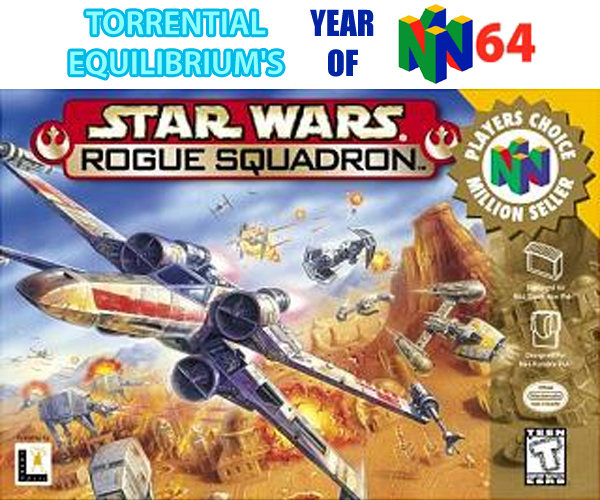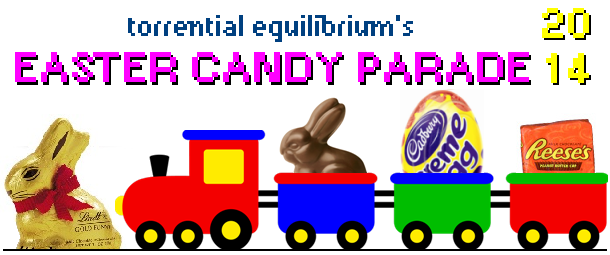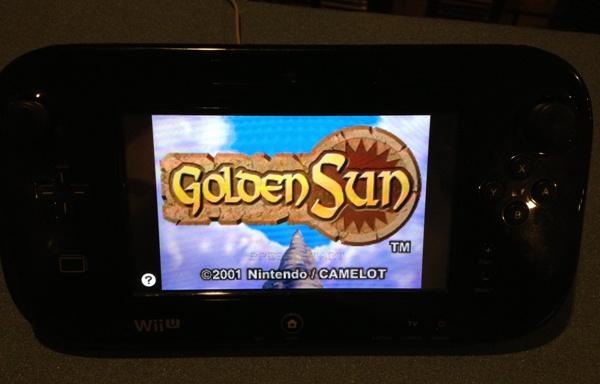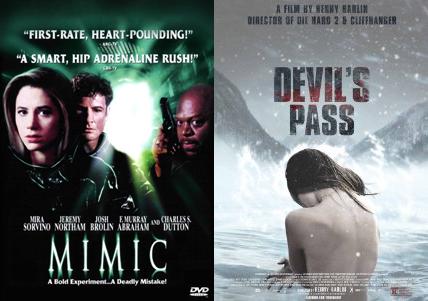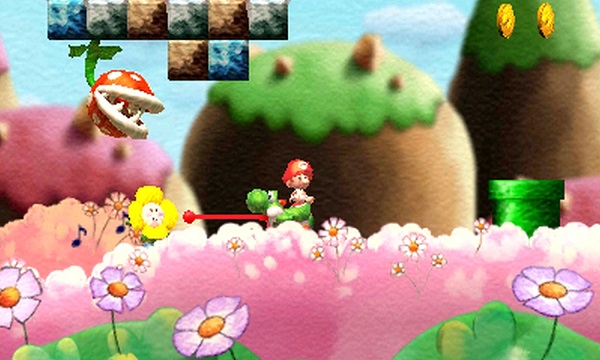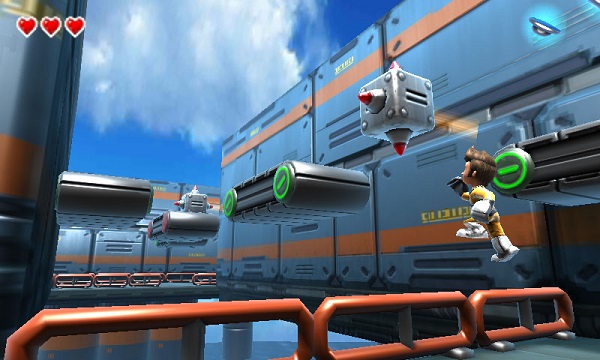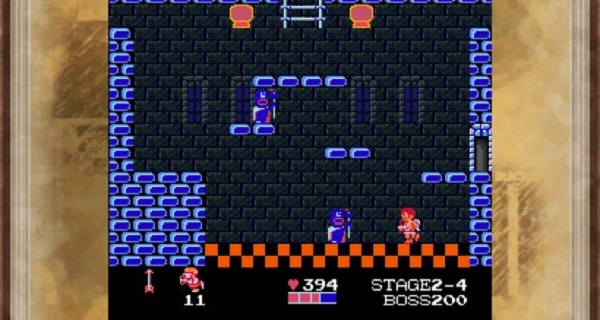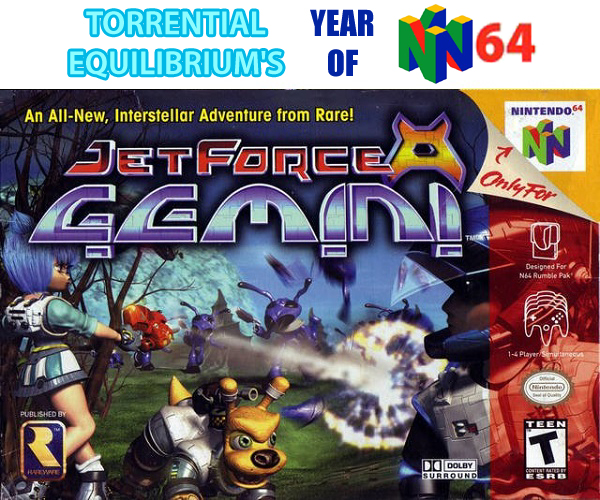
Jet Force Gemini and I have a unique relationship. I sort of glossed over the coverage in Nintendo Power back in the day, and I did rent it once. However, while I didn’t have any immediate problems with the game, my friends held a negative opinion of it (though why that was never came up), and I didn’t spend very much time with it because of peer pressure. As it stands, I think it’s still the only video game I haven’t played for that reason.
But now I have played it, and to be perfectly honest, I didn’t miss all that much.
That’s a pretty blunt way to put it though. The fact of the matter is that JFG is an alright game, but it certainly doesn’t dazzle the way that it should. Mostly because it’s got a handful of minor-to-infuriating issues that bog it down, but also because pretty much everything else that Rare did on the Nintendo 64 is a much better way to spend your time. If Mickey’s Speedway USA weren’t so mediocre and Donkey Kong 64 wasn’t a minigame-focused mess, JFG would be the worst N64 game developed by Rare.
Though, again, that’s harsher than it actually sounds. I appreciate Rare’s efforts with JFG, but it’s one of those games that could greatly benefit from a complete overhaul. A remake isn’t something I’d buy an Xbox One for, but I’d certainly plunk down $15 if it were remade as an XBLA game. But that’s for an actual remake. I wouldn’t pay a dime for a simple HD edition, and you’ll find out why soon enough.
The absolute worst problem with Jet Force Gemini is controlling the game. It has a control scheme reminiscent of a platformer mixed with a first-person shooter – that is to say that the control stick moves your guy in the direction you press it, and the left and right C buttons are used to strafe. The controls themselves are solid in theory, and they work for similar games, so what’s the problem here?
First of all, the characters feel very slippery. It’s hard to explain, but they don’t have that nice tight feeling that you expect to get from a high-profile 3rd-person action game. Precision movements are very difficult to make. It’s very common that your character won’t quite move the way that you want them to, and I’ve lost many, many lives by accidentally overshooting a ledge and plummeting into the void. Trying to move backward is also way more trouble that it ought to be.
The strafing is also super-weird. Maybe it’s a third-person thing, but the characters don’t simply move to either side the way you think they would. They seem to sort of randomly drift forwards or backwards a bit as well, and that can really throw you off in the middle of an intense firefight. Holding the R button to enter aim mode fixes this, but trying to aim while dodging the enemies’ unbelieveably accurate shots is its own little chanllenge.
When mixed with the slippery character movements, jumping is just not something you ever want to have to do. Just trying to line up your character for a jump is difficult, and landing where you want to is even harder. Fortunately, precision platforming isn’t something that the game asks you to do very often, but it’s a huge pain it the butt when it does come up.
The other issue I have with the game is how it handles collectibles. Rare games are well-known for requiring you to pick up a metric ton of silly baubles, and JFG alleviates that by making half of the pickups character upgrades (health/ammo expansions and new weapons) and keys, but it’s the other half of the collectibles that bug me.
The Tribals are a teddy bear-like race of friendly creatures who have been captured and enslaved by the space-bug bad guys. Throughout each stage, a handful of Tribals are scattered around, and it’s your job to find and save each one of them. They’re literally just standing around waiting to be saved, and all you have to do to save one is to run up to it, which will teleport it to safety.
What makes them annoying is that you have to rescue all of them to get to the end of the game. Already that’s kind of dumb because they aren’t handed out as challenge rewards like jiggies and power stars in Banjo-Kazooie or Super Mario 64, they’re just standing around. It doesn’t feel like you’re actually doing anything to earn your ending. It stings even more that you need certain upgrades before you can rescue some Tribals, so you have to backtrack if you’re going to get them all. The thing that makes me really irate about this is that when you return to a level, you have to rescue all the Tribals in it. Ones you’ve found already aren’t recorded, meaning that you’ve got to get them all in one go.
This basically means that you should ignore the Tribals until you’ve got all the upgrades and weapons, and then go through all the stages again. It would have been really nice of the game to tell you this in advance, but it doesn’t. So the first-time player will waste a ton of time getting all but that one inaccessible Tribal in each stage, and then return only to learn that he/she has to get them all again.
The one saving grace of this system is that since you and the enemies can straight-up murder the Tribals, so if you mess up and get one killed, you don’t have to reset the game. But really, that’s just alleviating one annoyance by susbstituting it with another, slightly less annoying one.
Jet Force Gemini’s redeeming qualities are pretty much all in the combat. It’s a third-person blast’-em-up, and firefights are good fun. Once you get a grip on the wonky controls, that is. The really fun thing is that it’s a cover-based shooter before cover-based shooters existed. The space-bugs have really great aim, and while you can’t snap to cover like you can in modern games, you’ll have to learn to strafe in and out from behind trees, crates, and the like if you want to make it very far. Simply trying to barrel through stages like a crazy person will not work at all.
The game also gives you a rather huge arsenal of guns and other weapons to play around with. After only a few stages, you’ll be equipped with a pistol, machine gun, plasma shotgun, sniper rifle, tri-rocket launcher, two types of grenades, and remote mines. There are even more guns and gadgets to collect, and enough different enemy types that pretty much all of them get a chance to shine. I’m the kind of guy who tends to favour one weapon, but JFG had the rare quality of making me comfortable with regularly rotating through my entire arsenal.
I’m also a fan of the cartoony space setting. It’s not a thing you see all that often in video games. Generally things of the sci-fi variety are super-serious, but JFG likes to goof it up whenever it gets a chance. From the adorable little Tribal coos and the gooey splatters that bugs make when you shoot them, to groan-worthy puns and jokes in the dialogue and the doofy-looking nervous system displays on the character select screen. And of course, since it’s a Rare game, at one point you have to find an NPC’s missing underwear.
I would be remiss to omit that you can also unlock special game modifiers by collecting the severed heads of your enemies. The special unlockables include: making blood rainbow-coloured, turning yuor main characters into kid versions of themselves, and changing all the basic enemies into Mr. Pants. That, my friends, is some sweet, sweet irony.
However, Jet Force Gemini does its absolute best to destroy any goodwill it’s earned once you get to the second act. Here, you’re given the task of collecting 12 spaceship parts (one of which is awarded for finding all the Tribals) before you can face the final boss. Most parts are found in new areas, so it’s not the worst fetch quest of all time. However, two of the ship parts are nearly impossible to win.
To get one of the pieces, you need to win a racing minigame. This is the absolute worst racing sequence that I’ve ever played, and it’s so viciously difficult that I almost turned off the system and called the game done after spending more than an hour over two evenings trying to win. I thought the Goron race minigame in Majora’s Mask was bad, but it’s got nothing on the JFG race.
What makes the race bad is mostly in the controls. Despite the N64 controller having an analog stick, moving your racer left or right is not a precise affair. Rather, you move the stick and it basically just flings itself in that direction. It’s basically impossible to control, and if you so much as gaze the wall, your speed is immediately cut in half (at least!). The AI is also brutal. The racer that starts next to you has a one-way rubber band effect; if you’re behind, it’s extremely difficult to catch up, but if you’re ahead, he will find a way to pass you. I don’t know how I passed this race, but I did it, and I felt the biggest relief, as I assumed that the worst was now behind me.
Enter Floyd. Over the course of the game, you recruit a little flying robot buddy who you can control to play little obstacle course mini-games for multiplayer unlockables. Except that one of these courses actually has a mission-critical item as its top prize, and it’s retarded hard to win.
The idea is simple: fly through a course of pipes, collect 8 doodads, and shoot 4 targets. Super easy. I completed it like nothing, but I wasn’t awarded the prize. What the game doesn’t tell you is that you have to do all this in under a minute. Also, the controls while playing as Floyd are even worse than the racer controls. Aiming is a bit sloppy in JFG on the whole, but trying to shoot something acurately while under a strict time limit? Nearly impossible. That and the collectibles have a hitbox that is much smaller than they are, so you basically have to fly right through the middle of them or you’ll miss and have to start over.
I came close twice, both times hitting the finish line less than a half-second too late. The fact remains that the other hundred or so attempts (I’m not exaggerating, either…) ended somewhere between 1:07 and 1:22. I’ve come close enough that obviously I think it’s something that I could accomplish, but not without channeling a lifetime’s worth of luck.
So I gave up. I invoked the Fuck It Adjustment, watched the final boss battle and ending on YouTube, and moved on with my life. This stupid mini-game was so infuriating that I nearly destroyed my N64 controller; clearly I wasn’t having fun anymore, and at that point it’s just not worth it. I think that by choosing to give up on Jet Force Gemini, I’ve grown a little bit as a person.
And so, my journey with the Jet Force came to an abrupt end. I got everything else required to beat the game, so I came close enough, but this one’s gonna remain incomplete. I suffered through a lot of crap just to get to the end, and that stupid Floyd course was the straw that broke the camel’s back. I want to be more positive about the game overall, but the fact of the matter is that the entire second half seems designed to make you hate it. It’s too bad, because there’s something decent buried under all that crud.

